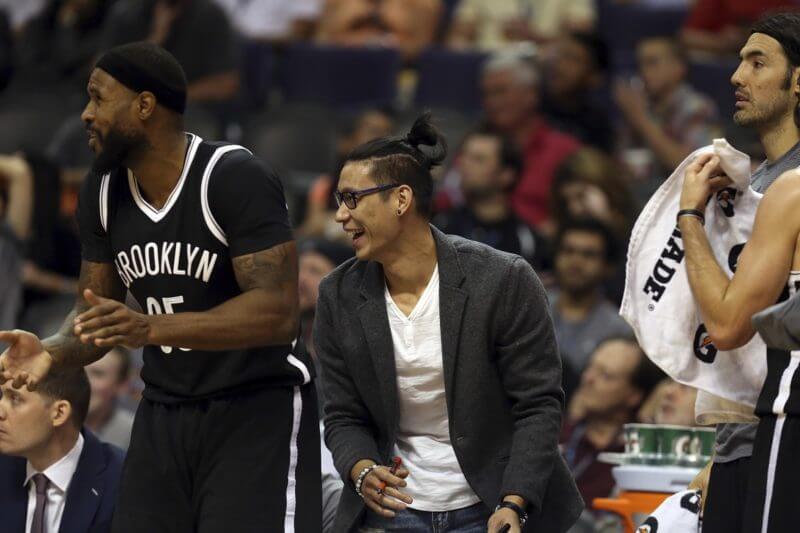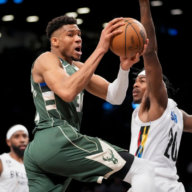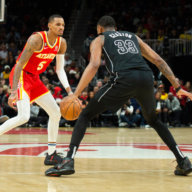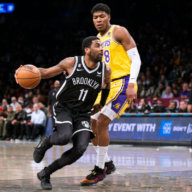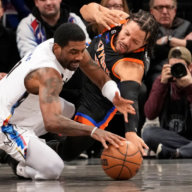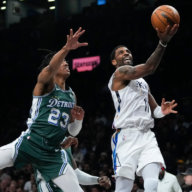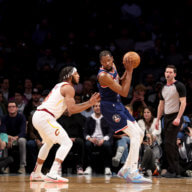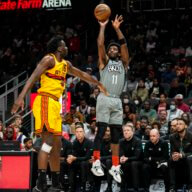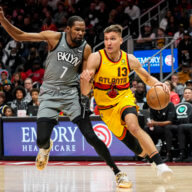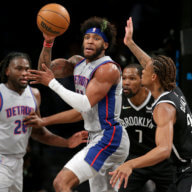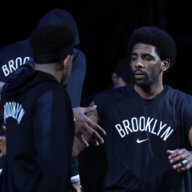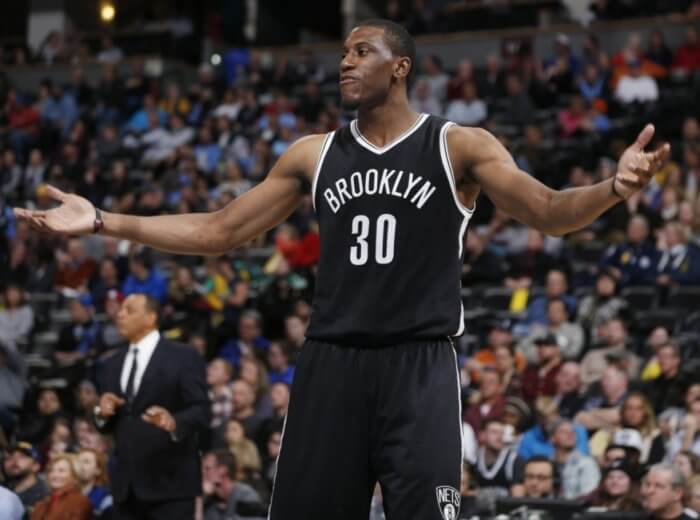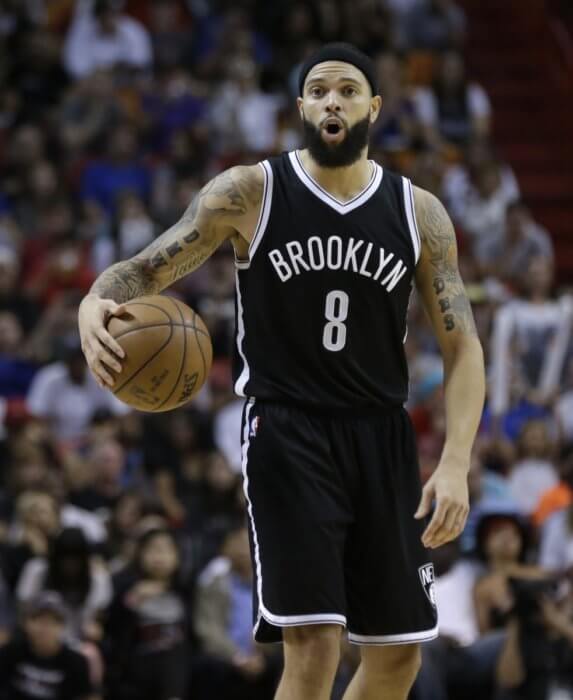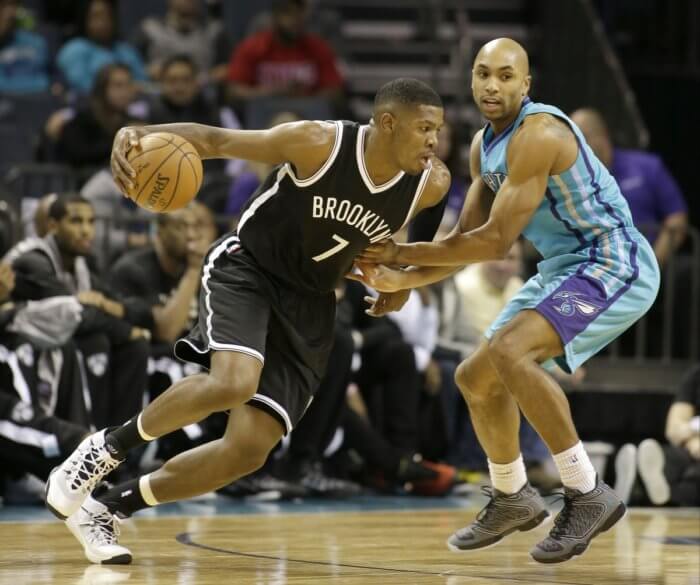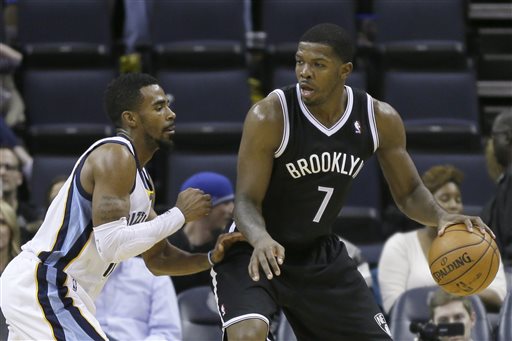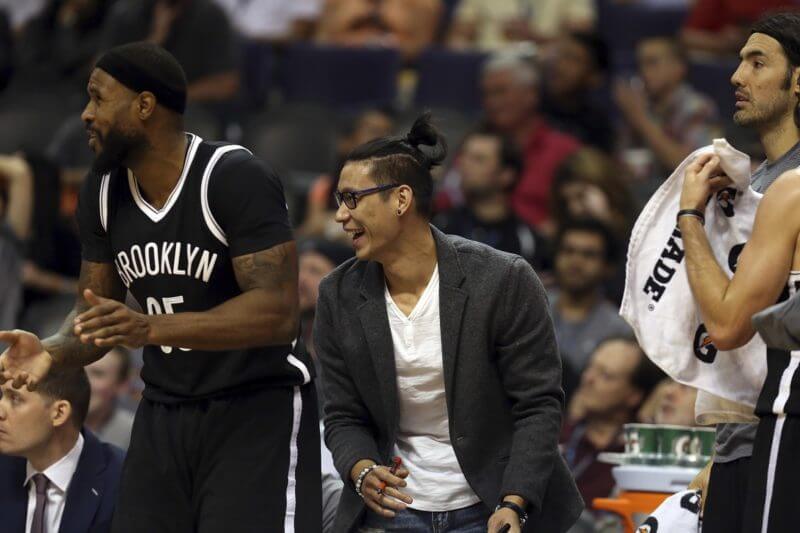
Straining Issues: The Problem With Jeremy Lin’s Hamstring
First and foremost, the Brooklyn Nets dearly miss Jeremy Lin, that much is clear. The summer starlet will miss his eighth-straight game this afternoon, officially spilling over the initial two-week prognosis he was given after straining his hamstring on November 2nd against the Detroit Pistons.
Understandably, supporters have become frustrated given the Nets’ early(ish) success with Lin running the offense, now forced to watch a rookie, a D-Leaguer, and a former D-Leaguer (and shooting guard) handle the role to middling results. Generally speaking, however, hamstring strains take about 3 to 8 weeks to recover from depending on severity, so the Nets’ original guess of 14 days now seems generous however you cut it.
At it’s core, hamstring strains are tricky, particularly so because that word itself is misleading. These strains aren’t like tweaking an ankle or dislocating a finger, and they often linger far past their expiration date. In fact, they can even be small tears and, if they’re not given rehab and time, can leave athletes shelved indefinitely.
Hamstring issues tend to crop up in hyper-intense explosion sports like basketball, football, and running more often than others thanks to athletes’ need to cut, jump, and change direction on a dime. Even as I was writing this piece, the Cincinnati Bengals’ A.J. Green was pulled off the field on a cart due to a hamstring issue — something that the barely-alive AFC North team will dread over the coming weeks.
Chris Paul strained his hamstring during the 2015 playoffs and missed two crucial games against the Houston Rockets, a series the Los Angeles Clippers would eventually lose in a dramatic Game 7. In Game 3 and 4, Paul was only able to play 23 and 26 minutes, respectively, but the Clippers’ hand was obviously forced in terms of the All-Star point guard’s availability.
Consider the circumstances between the Western Conference Semi-Finals and the third week of a young Nets season with little-to-no-expectations — it’s no surprise that head coach Kenny Atkinson is taking the long road to recovery.
On the flip side, the Boston Celtics’ Avery Bradley strained his hamstring against the Atlanta Hawks in Game 1 of the 2015-2016 postseason. Bradley was unable to return to the team and the Celtics would lose the series 4-2. Even when the games mean everything, those pesky hamstrings can ruin an elite defender like Bradley completely — so it’s not an issue of desire from either the player or front office.
Elsewhere, Tiago Splitter suffered a Grade 2 hamstring strain during training camp in early October and he still hasn’t played for the Hawks this season. Or, take Jeremy Lamb, who strained his hamstring five days before Lin did and hasn’t played for the Charlotte Hornets since. Finally, what about the Indiana Pacers’ Rodney Stuckey, who only just returned a few days ago after straining his hamstring against the Nets on October 28th?
The point? No hamstring injury is equal, each one deserving of its own rehab based on severity or circumstance. For the Clippers, it was imperative that Paul return quickly, but for the Nets (and Pacers, Hornets, and Hawks) in November? It’s an entirely different story.
Sure, the Nets were, for the time being, in an extremely early playoff race when Lin went down. And, yes, the Nets are stuck with trotting out Isaiah Whitehead, Yogi Ferrell, Randy Foye, and Sean Kilpatrick against the likes of Russell Westbrook and Damian Lillard, but, make no mistake, this is pragmatic, through decision-making from the Nets’ front office.
So, what now?
Unfortunately, the Nets are at the mercy of Lin’s muscles, as hamstring recovery is an issue of finicky time. Unlike, say a broken finger or twisted ankle, the start-and-stop nature of basketball makes it tough to tell. Although physical therapy and stretching exercises are key, the best advice for a strained hamstring calls for getting rest, icing the area, and taking anti-inflammatory help like Advil.
From Chris Erskine’s article in The Los Angeles Times following the aforementioned Paul injury, he noted:
Michael Vick, Lionel Messi, LeBron James have all struggled with strains and tears. Fickle and merciless, hamstring problems recur with agonizing frequency — the re-injury risk is 12% to 31%, the Columbia study found.
And therein lies the biggest issue of all: reinjury.
If you think the water is choppy now, imagine how treacherous the sea becomes without Lin for the remainder of the season. Could you imagine the disappointment if he came back too early, reinjured his hamstring, and then required surgery? Remember how dreadful the final six games of 2015-2016 were after Sean Marks shut down Brook Lopez and Thaddeus Young? Well, this would be worse, particularly so if it occurred even before Christmas. The precious Celtics’ draft swap that everybody is worried about sacrificing suddenly becomes far more desirable should the Nets lose Lin indefinitely.
The moral of the story, then, is patience.
Believe the Nets when they say that they’d like Lin back as soon as possible. Believe Atkinson when he says that Lin is just not quite ready yet. Of course, the Nets are a much different team without Lin, and certainly a worse one at that — but this isn’t cut and dry, black and white, or an issue of simply wanting the point guard to tough it out.
Sometimes you sit out one game because it’s the playoffs; sometimes you miss the first two months of the season — no hamstring strain is the same, much like the imperfectly perfect snowflake.
Lin will be back to save the Nets’ season soon, but not until he’s fully ready — and that’s absolutely the right choice to make.

